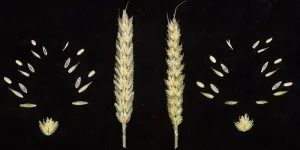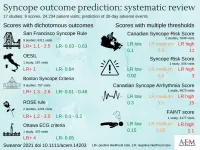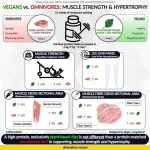Tampons, sanitary napkins could diagnose yeast infections with color-changing threads
2021-05-19
(Press-News.org) The yeast Candida albicans can cause itchy, painful urinary tract and vaginal yeast infections. For women in low-resource settings who lack access to healthcare facilities, these infections create substantial social and economic burdens. Now, researchers reporting in ACS Omega have developed color-changing threads that turn bright pink in the presence of C. albicans. When embedded in tampons or sanitary napkins, they could allow women to quickly and discreetly self-diagnose vulvovaginal yeast infections, the researchers say.
According to the Mayo Clinic, about 75% of women will experience a yeast infection, or vulvovaginal candidiasis, at least once in their lifetime. Although women in high-resource areas can easily be diagnosed with a vaginal swab at their doctor's office and then treated with an antifungal medication, many women throughout the world lack access to basic healthcare facilities. Moreover, in some resource-limited areas, societal taboos cause women to feel shame or embarrassment about the symptoms, which prevents them from seeking a doctor's care. Therefore, Naresh Kumar Mani and colleagues wanted to develop an inexpensive method that could be integrated into menstrual hygiene products, allowing women to quickly, easily and discreetly self-diagnose yeast infections.
The researchers began with ordinary multifilament cotton threads purchased at a local craft store. To increase the wicking properties of the threads, the team treated them with a heptane solution that removed waxes and binders added during manufacturing. Then, the threads were coated with a molecule called L-proline β-naphthylamide (PRO) -- the substrate for an enzyme secreted by C. albicans -- and embedded in the inner layers of sanitary napkins and pads. When the researchers added simulated vaginal fluid spiked with C. albicans and an indicator solution, the spots of the napkins or pads containing yeast changed to a bright pink color. The detection time was only 10 minutes, compared with 24-72 hours for conventional tests. In addition, the new test costs only 22 to 28 cents per napkin or tampon, and it could easily be adapted to simultaneously detect other pathogens, such as bacteria that also can cause urinary tract infections, the researchers say.
INFORMATION:
The authors acknowledge funding from the Manipal Centre for Infectious Diseases, the Vision Group on Science and Technology of the Government of Karnataka, the Indian Council of Medical Research and the Science and Engineering Research Board, Department of Science and Technology, Government of India.
The paper is freely available as an ACS AuthorChoice article here.
The American Chemical Society (ACS) is a nonprofit organization chartered by the U.S. Congress. ACS' mission is to advance the broader chemistry enterprise and its practitioners for the benefit of Earth and all its people. The Society is a global leader in promoting excellence in science education and providing access to chemistry-related information and research through its multiple research solutions, peer-reviewed journals, scientific conferences, eBooks and weekly news periodical Chemical & Engineering News. ACS journals are among the most cited, most trusted and most read within the scientific literature; however, ACS itself does not conduct chemical research. As a leader in scientific information solutions, its CAS division partners with global innovators to accelerate breakthroughs by curating, connecting and analyzing the world's scientific knowledge. ACS' main offices are in Washington, D.C., and Columbus, Ohio.
To automatically receive news releases from the American Chemical Society, contact newsroom@acs.org.
Follow us: Twitter | Facebook
[Attachments] See images for this press release:

ELSE PRESS RELEASES FROM THIS DATE:
2021-05-19
Researchers have found the elusive genetic element controlling the elongated grains and glumes of a wheat variety identified by the renowned botanist Carl Linnaeus more than 250 years ago.
The findings relating to Polish wheat, Triticum polonicum, could translate into genetic improvements and productivity in the field.
Wheat, in bread, pasta, and other forms, is a vital energy and protein source for humans. Each individual grain is nestled within the glumes and other leaf-like organs called lemma and palea which affect the grain's final size, shape, and weight.
Characterised by Linnaeus in 1762, Polish wheat has long grains, glumes, ...
2021-05-19
The sun delivers more energy to Earth in one hour than humanity consumes over an entire year. Scientists worldwide are searching for materials that can cost-effectively and efficiently capture this carbon-free energy and convert it into electricity.
Perovskites, a class of materials with a unique crystal structure, could overtake current technology for solar energy harvesting. They are cheaper than materials used in current solar cells, and they have demonstrated remarkable photovoltaic properties -- behavior that allows them to very efficiently convert sunlight into electricity.
Revealing the nature of perovskites at the atomic scale is critical to understanding their promising capabilities. ...
2021-05-19
Scientists, governments and corporations worldwide are racing against the clock to fight climate change, and part of the solution might be in our soil. By adding carbon from the atmosphere to depleted soil, farmers can both increase their yields and reduce emissions. A cover story in Chemical & Engineering News, the weekly newsmagazine of the American Chemical Society, explores what it would take to get this new practice off the ground.
Historically, agricultural soil has provided crops with the nutrients needed to grow, write Senior Editors Melody Bomgardner and Britt Erickson. Today, most soil is considered degraded, leading farmers to rely on fertilizer, irrigation and pesticides, all of which are costly. Scientific advancements ...
2021-05-19
Des Plaines, IL - The Canadian Syncope Risk Score (CSRS) is an accurate validated prediction score for emergency department patients with unexplained syncope. These are the results of a study titled Multivariable risk scores for predicting short-term outcomes for emergency department patients with unexplained syncope: A systematic review, to be published in the May issue of Academic Emergency Medicine (AEM) journal, peer-reviewed journal of the Society for Academic Emergency Medicine (SAEM).
Syncope is a common presentation to an emergency department, with patients at risk of experiencing an adverse event within 30 days. Without a standardized risk stratification system of patients, there will be health care ...
2021-05-19
Protein intake is more important than protein source if the goal is to gain muscle strength and mass. This is the key finding of a study that compared the effects of strength training in volunteers with a vegan or omnivorous diet, both with protein content considered adequate.
In the study, which was conducted by researchers at the University of São Paulo (USP) in Brazil, 38 healthy young adults, half of whom were vegans and half omnivores, were monitored for 12 weeks. In addition to performing exercises to increase muscle strength and mass, the volunteers followed either a mixed diet with both ...
2021-05-19
Artificial intelligence is providing new opportunities in a range of fields, from business to industrial design to entertainment. But how about civil engineering and city planning? How might machine- and deep-learning help us create safer, more sustainable, and resilient built environments?
A team of researchers from the NSF NHERI SimCenter, a computational modeling and simulation center for the natural hazards engineering community based at the University of California, Berkeley, have developed a suite of tools called BRAILS -- Building Recognition ...
2021-05-19
Quality of life relating to physical and mental health can be a key element in the treatment of obese adults. For this reason, interdisciplinary clinical measures including cognitive and behavioral therapy may produce more significant outcomes for these people, reducing not just weight but also symptoms of depression.
This is the main conclusion of a study conducted in Brazil by the Obesity Research Group at the Federal University of São Paulo (UNIFESP) in Santos, São Paulo state, and published in the journal Frontiers in Nutrition.
Considered one of the world’s major public health problems, obesity has ...
2021-05-19
EVANSTON, Ill. --- Self-affirmation, the practice of reflecting upon one's most important values, can aid Black medical students in reaching their residency goals. But conversely, it can lead to the perception that they are less qualified for a prestigious residency than their peers.
The pandemic has underscored the racial disparities in the quality of healthcare, a field in which Black Americans are vastly underrepresented as medical physicians.
New Northwestern University research aims to address the "leaky pipeline" preventing Black medical students from completing medical school to pursuing residencies in high-need and underrepresented areas.
Sylvia Perry, assistant professor of psychology in the Weinberg College of Arts and Sciences at Northwestern, is the ...
2021-05-19
COLUMBUS, Ohio - Though obesity in midlife is linked to an increased risk for Alzheimer's disease, new research suggests that a high body mass index later in life doesn't necessarily translate to greater chances of developing the brain disease.
In the study, researchers compared data from two groups of people who had been diagnosed with mild cognitive impairment - half whose disease progressed to Alzheimer's in 24 months and half whose condition did not worsen.
The researchers zeroed in on two risk factors: body mass index (BMI) and a cluster of ...
2021-05-19
BOSTON - In a major breakthrough, researchers at Massachusetts General Hospital (MGH) have discovered how amyloid beta--the neurotoxin believed to be at the root of Alzheimer's disease (AD)--forms in axons and related structures that connect neurons in the brain, where it causes the most damage. Their findings, published in Cell Reports, could serve as a guidepost for developing new therapies to prevent the onset of this devastating neurological disease.
Among his many contributions to research on AD, Rudolph Tanzi, PhD, vice chair of Neurology and co-director of the McCance Center for Brain Health at MGH, led a team ...
LAST 30 PRESS RELEASES:
[Press-News.org] Tampons, sanitary napkins could diagnose yeast infections with color-changing threads






